BY GREG BROOKES
The Kettlebell Swing is the most important of all the kettlebell exercises but also the one that most people struggle to master. The kettlebell swing is based on the deadlift movement pattern and hits almost every muscle in the body.
If you only had time to do one kettlebell exercise then the kettlebell swing would be a fine choice.

Kettlebell Swing Overview
The Kettlebell Swing should be thought of as a pulling movement. It targets the posterior chain and essentially you are loading and de-loading the back of the body as you accelerate and decelerate the kettlebell.
Be warned the eccentric or deceleration part of the kettlebell swing is what causes muscle soreness so you could be walking like John Wayne for a few days following a good set of kettlebell swings.
The kettlebell swing is a dynamic movement. As the kettlebell descends from the top part of the movement gravity takes its toll and the overall weight of the bell increases, so a 16kg kettlebell will feel much heavier at the bottom of the kettlebell swing.
Also at the bottom of the kettlebell swing you are decelerating its load and forcing the muscles to absorb and then reverse the swings momentum. It is for this reason that you can get some truly amazing results without having to use a really heavy kettlebell for the Swing.
7 Kettlebell Swing Benefits
1– Best Fat Loss Exercise
If your main objective is fat loss then there are not many single exercises better than the kettlebell swing. The swing exercise targets over 600 muscles in one go creating huge demands on energy consumption which in turn means more calories burnt.
2– Super Cardio
Want to feel like you have just sprinted the 100 metres without moving your feet?then this is the exercise for you. Huge amounts of oxygen are required to fund the kettlebell swing movement so it only takes between 30 – 60 secs before you heart and lungs are really pushed to their maximum capacity.
3 – Get Strong Quickly
Big strength gains come from eccentric movements which involve lengthening muscles under load. The kettlebell swing overloads 100’s of muscles eccentrically as you actively absorb the energy from every swing movement. Look out though, eccentric movements are what makes your muscles feel sore the next day!
4 – Rehabilitate Shoulders and Knees
The swing tries to pull the shoulder joints apart during the movement and as you fight to keep your joints in place your stabilising muscles get stronger. If you suffer with bad knees then often the swing can be tolerated due to the lack of excessive bend at the knee meaning you can still strengthen the legs, hips and your cardio without needing to squat or lunge.
5 – Develop Explosive Power
Sports are all about power. The faster you can release stored energy the more powerful you can move. The kettlebell swing develops lots of explosive powerthrough the hips and legs which is vital for most sports.
6 – Exercise Anywhere
Unlike lots of other exercises you hardly need any room to perform the kettlebell swing. Your feet will not move and the kettlebell will only extend slightly further than your hands so you could workout anywhere with a 6 foot square space.
7 – Only One Kettlebell Required
The kettlebell swing is a very diverse exercise. You can start with the two handed swing and as you out grow that movement instantly increase the intensity by using one hand. When one hand is getting too easy you can add in the lateral swing for even more of a challenge. One kettlebell can last you a lifetime!
Muscles Used During the Kettlebell Swing
The kettlebell swing predominantly works into the back of the body especially the glutes, hamstrings, hips, core and back. You will get some conditioning through the quads but not as much as with squats or lunges, great for women because it doesn’t bulk up the legs. The shoulder stabilisers also get a lot of work as they try and prevent the shoulder joint from being pulled apart.

The lower back should act in an isometric manner meaning that it should maintain a flat or neutral spine throughout the movement, the core muscles will help to maintain this position. An excessively sore lower back is usually the result of too much flexion and extension of the lower back rather than the hips.
The only muscle group that does not get that much attention from the kettlebell swing is the chest. However, this is not such a bad thing as the chest is often overworked by men resulting in rounded shoulders. In fact the swing can help improve a chests appearance by producing a more upright posture and pulling the shoulders backwards.
Selecting the Correct Kettlebell Starting Weight
As mentioned, the kettlebell swing is a dynamic movement so caution needs to be exercised when selecting the right weight.
If you choose a weight that is too heavy then you risk overloading your muscles, tendons and ligaments too quickly and risk injury.
However, if you start too light then the kettlebell won’t offer enough overload to your body and thus won’t force any adaptation and therefore results.
Here are the starter weights that I recommend:
Women – 8kg / 15lbs or for athletic women 12kg / 25lbs.
Men – 12kg / 25lbs or for athletic men 16kg / 35lbs.
If you want to know more about the different types of kettlebells and the ones that I recommend then please see my Beginners Guide to Kettlebell Training.
Getting Started with the Kettlebell Swing
Now you know the huge benefits of the kettlebell swing and have selected the correct starting weight lets get started.
Master the Hip Hinge first
There are various different types of kettlebell swing (more on these later) but to begin with it is important that you master the basic hip hinge movement.
The hip hinge is based on one of our fundamental movement patterns and involves bending or creasing at the hips.
Watch this tutorial video that explains the importance of the hip hinge:
Two Handed Kettlebell Swing
Once you are comfortable with the hip hinge movement you can start with the 1st variation of the kettlebell swing, the two handed swing.
Watch this tutorial video about the two handed swing:
13 Things You Need to Get Right for the Ultimate Kettlebell Swing
1– Get Your Feet In The Right Place
The feet should be placed at just a little wider than shoulder width apart. Toes should turn outwards at approx. 10 degrees. The toes should track along the same line as the shin and knees preventing unnecessary torque on the knee joint during each swing.
Weight should remain predominantly on the outside and middle to heel of the feet. This will ensure that you activate the back of the body and buttocks correctly.
At no point should your weight transfer to your toes.
To ensure that your weight distribution is correct you can practice a few kettlebell swings with your toes curled back towards you.
2 – Use Your Hips for Power
Your hips are the engine or powerhouse for the movement. You should crease at the hips with a flat back. Think about actively pushing your hips backwards and then driving them forwards.
The hip movement is forwards and backwards, not up and down.
As you push your hips forwards you should actively clench your backside. The harder you clench the more power you will generate. Think about standing tall and stop at the vertical position, you don’t want to learn backwards past vertical.
3 – Keep Your Back Flat
It is crucial that during every single kettlebell swing you keep your lower back flat. There should be a straight line running from your tail right up to your shoulders. Keep your chest raised high as if being pulled up by your rib cage.
If you find that your back starts to bend at the bottom part of the kettlebell swing then push your hips further backwards and don’t lean so far forwards.
The length of your hamstrings will determine naturally how far forwards you can go before arching your back.
4 – Activate Those Abs
The core and abdominal muscles are worked hard during the kettlebell swing. Each time you drive your hips forwards your abs should contract to prevent the hips from going past the centre-line. The abdominal muscles also help to guide you on the downward part of the swing preventing the kettlebell from swinging too deep between your legs.
5 – Don’t Use Your Shoulders
It is important to realise that during the swing the shoulders are used merely as a connection between arms and body. All the power should come from the hips.
One of the biggest mistakes I see when teaching kettlebells is an over-activation of the shoulders.
Try to relax the shoulders while at the same time keeping the shoulders joints in their sockets. The kettlebell will try to pull the arms forwards, it is your job to control the kettlebell and ensure that the shoulders are pulled back.
The kettlebell swing is particularly effective at rehabilitating shoulders because it strengthens connective tissue as the shoulder joint is constantly being pulled in and out of its socket.
Not only are swings great for strengthening muscle tissue but they also creates a nutritious pumping mechanism at the shoulder joint.
6 – What’s Your Head Doing?
The head needs to be positioned so that it creates a good alignment at the neck. I will often teach beginners just to focus on the horizon as a lifted chin at the downward part of the kettlebell swing will help to keep the back flat.
However, swinging with a lifted chin consistently will create an over extension at the neck during the bottom part of the swing.
So once you are comfortable with keeping your back flat throughout the entire movement you should practice keeping your head and neck in alignment through the entire movement.
As the swing comes down you need to follow the movement with the head and end up looking just in front of your feet at the bottom part of the movement. So you begin with eyes looking straight ahead and finish with eyes looking about 2 feet in front of you.
7 – Use The Correct Grip
During your kettlebell swing your grip should be relaxed and not too tight. Depending on the width of the kettlebell handle you are using you may be able to hold on with all fingers from both hands, this is the best option.
If you are using a narrow handled kettlebell like the competition kettlebells then you may only be able to hold on with 3 fingers from each hand and have the little finger outside the handle.
The swing challenges the grip more than many people realise. During the swing the kettlebell is constantly trying to get away from you and so good grip is required just to keep holding on. If you use a fatter gripped handle then your grip will be challenged even more!
8 – Get Your Swing Height & Depth Correct
Remember that the kettlebell swing comes from the hips and not the lower back or shoulders. The forward bending movement should come from a crease at the hips and not a dipping of the knees. A good way to monitor this is to take the kettlebell only to the mid forearm on the inner thigh.
The shoulders should not move vertically forward of your toes.
The top of the kettlebell swing can vary and will be dictated by the strength and power of your hips. The harder and faster you drive your hips forwards the higher the kettlebell will want to go.
I recommend aiming for chest height with the arms horizontal with the floor.
When beginning you will want to focus more on the snap of your hips than the height of the kettlebell. So a good hip snap but only a height of 45 degrees is a better start than using your shoulders to pull the kettlebell up the rest of the way.
9 – Use The Right Breathing Pattern
There are two different types of breathing that you can use with your swings depending on the kettlebell weight. When using a light kettlebell you should breathe out during the downward phase and in during the upward phase. This technique works inline with nature stimulating your extensor muscles as you straighten upand forces the air out as you fold forwards.
However, once the kettlebell gets heavier and more challenging you will find that your breathing changes. You will find that you brace your abs and hold your breath momentarily on the downward phase and breath out on the upward phase.
The reason for this change is due to your diaphragm being used as a core stabiliser.
As the weight increases your diaphragm steps in to help out your core muscles and stabilise your spine. As your diaphragm cannot both stabilise and breathe at the same time you hold your breath. You then need to breath out and then breath back in again all at the top of the kettlebell swing.
10– Starting the Kettlebell Swing
There are two schools of thought with regards to starting the swing. First you can pick up the kettlebell and then start the swing momentum by nudging it off your thigh or secondly you can start the swing directly off the floor in front of you. Both methods have their advantages.
Nudging the kettlebell off the thigh ensures that you are already upright and the lower back is not comprised however it does entail a few small kettlebell swings to really get the momentum going. Dragging the kettlebell off the floor, between your legs and into the swing feels more fluid but it can leave your back feeling a little more vulnerable during that first pulling movement as you are deeper than usual.
If you do opt for starting from the ground then start with the kettlebell 12 inches in front of your toes, load your hamstrings by putting your weight on your heels, brace your abs, pull back between your legs and then drive your hips forwards with everything you’ve got.
11– Finishing the Kettlebell Swing
So you have started correctly and used perfect form throughout your swings. The last thing you want to do now is hurt yourself by finishing the swing badly.
The swing should finish with you returning the kettlebell to just in front of the line of your feet.
Don’t attempt to twist your body and swing it to the side of your one foot. So during the last kettlebell swing, decelerate its momentum as it swings between your legs and come to a steady stop in front of you, keeping your back flat at all times.
12– Master Your Swing Timing
Timing is everything when swinging the kettlebell. If your timing is off you will not generate the correct power through your hips and also “muscle” the kettlebell up more with your shoulders.
When the kettlebell is at its lowest point between your legs your hips should be the furthest back they can be. As you then drive your hips forwards to reverse the momentum your hips will fully lock out just before your arms reach their horizontal position with the floor.
The final few inches of the swing will be generated by the momentum of the kettlebell.
Remember that the kettlebell swing is only 2 movements: backwards and forwards. It is very common to see a 3rd bounce or rock at the bottom of the swing but this should be avoided. You can practice to the count of 1 backwards, 2 forwards.
13– Generating More Power
As mentioned earlier, all the power for the kettlebell swing comes from the hips. If you want to generate the maximum amount of power then explode forwards with the hips and snap them to vertical.
Stand tall at the end of the movement. You will generate a shudder through your body.
Beginners should really practice this “snapping of the hips”. The harder you snap the more force you will generate and the more muscles and energy you will use.
Here’s a drill to help improve your hip snap:
14 Kettlebell Swing Mistakes and How to Fix Them
1– Rocking on the feet
Solution: Don’t get into a rocking routine when you swing, remember its 2 moves, backwards and forwards, nothing else. Keep those feet firmly planted.
2 – Too much weight on the toes
Solution: Get back on those heels to effectively activate the back of your body. Train in bare feet or flat shoes and curl your toes back to ensure that your toes aren’t being overused.
3 – Feet are too wide apart
Solution: If your stance is too wide you will lack power and reduce the amount of leverage you have through your hips and knees. Your feet should be just a little wider than shoulder width.
4 – Leaning too far backwards at the top
Solution: Your body should stop at the top of the movement when you are standing vertical or you risk injuring your back and not using your hips correctly. Practice standing tall and squeezing the glutes tight. Swinging the bell just to horizontal with the floor or reducing the weight may also help you to master this technique.
5 – Muscling the kettlebell up with the shoulders
Solution: Ensure that the complete kettlebell swing comes from the hip snap and not the shoulders. Relax your arms and work those hips. Tired shoulders are a sign that you are using them too much during the exercise.
6 – Hunching shoulders up by the ears
Solution: Keep your shoulders low and as far away from your ears as possible. If you are getting sore upper back or neck muscles you are probably using your arms and shoulders too much.
7 – Rounding the back
Solution: The back must stay flat no matter what. If you find that you are getting a very sore back then re-address your technique starting at the hip hinge. The back muscles are used during the kettlebell swing but only as stabilisers and should not be the source of power.
8 – Flicking the kettlebell
Solution: As the kettlebell reaches the transition period at the bottom between your legs ensure that the bell does not flick. The wrists should be kept straight to ensure a nice fluid movement.
9 – Hands above the kettlebell
Solution: At the top of the swing the wrists and kettlebell should be inline. The kettlebell should not hang below or rise above the wrists. If the kettlebell isn’t inline with the wrists then you are using your arms too much, use those hips.
10– Pulling you forwards
Solution: A common problem when your weight is not kept on the middle and heels of the feet. The kettlebell will pull you forwards and onto your toes. Sink back onto your heels and load your buttocks.
11– Knees are too wide
Solution: Often the knees will want to splay outwards to allow for the kettlebell to swing between the legs. Ensure that your feet and shins are always inline at approx. 10 degrees and focus on pushing your hips back further rather than pushing the knees outwards.
12– Forward shoulder lean
Solution: Do not lean further forward with your shoulders than the line of your toes. If you find this is happening sit further back on your heels and keep your chest up.
13– Crooked neck alignment
Solution: Keeping your head up at the bottom part of the kettlebell swing can cause a jarring of the neck if you go too low. Practice moving the head as if an extension to the back. Change your vision to just in front of your toes at the bottom of the swing.
14– Injuring your back picking up and putting down the kettlebell
Solution: Don’t be lazy starting and finishing your swings this is the worst time to take your eye off your technique. Keep your back flat and use your hips to pick up and put down the bell.
7 Variations of the Kettlebell Swing
Here are the variations of kettlebell swing starting with the easiest. I’ve also added when you should progress from each variation onto the next.
1– Two Handed Kettlebell Swing
The first swing variation that you should learn. The kettlebell is held with both hands so the body works in a symmetrical forwards and backwards movement. For many people you may only ever need to use this one variation. Get great at it!
Progression: Don’t progress onto the one handed swing until you can comfortably swing the kettlebell with two hands for 60 seconds.
2 – One Handed Kettlebell Swing
Swinging the kettlebell with one hand does two things: firstly it doubles the load on the one shoulder joint and secondly it pulls the body into rotation requiring more core stabilisation. The load still remains the same coin the legs and hips.
Progression: Move onto the alternating swing once you can swing the kettlebell with one hand for 60 seconds.
3– Alternating Kettlebell Swing
With the alternating swing the brain has to start working a little harder, you need to focus or you can miss and drop the kettlebell. You can begin by changing hands every 5-10 swings and reduce it down to every single swing.
Progression: once you can alternate your swinging arm for 60 seconds then you are ready to try the stepping swing.
4– Side Stepping Kettlebell Swing
The side stepping swing involves a short step sideways with every swing. You will need lots of focus and a good swinging technique to perform this effectively and safely.
Progression: there are no specific requirements to move onto the walking swing because the movements are very different.
5 – Walking Kettlebell Swing
Great for training outside and to add an addition element to the regular two handed swing. Take a step forward during every swing. How far forwards can you manage in one set of swings?
Progression: once you reach this point you are very comfortable with the swing and the next two variations can be completed when you feel ready.
6– Double Kettlebell Swing
Holding a kettlebell in each hand will double the load placed on your body so be careful. You are now performing a one handed swing but with a kettlebell in each hand. You may want to reduce the kettlebell weight in each hand so the total weight is not double what you are used too.
7– Lateral Kettlebell Swing
The lateral swing is a technical move that must be performed with caution. You must have good core strength and good hip mobility. The kettlebell is taken across the body rather than between the legs so you also need to be careful not to hit the front knee.
When to Increase the Kettlebell Weight
As you continue practicing and working on the kettlebell swing you will get to a point where you need to increase the kettlebell weight.
I have found the following system very effective for knowing when to increase the weight safely:
Stage 1: Two Handed Kettlebell Swings – when you can swing for 60 seconds move to stage 2.
Stage 2: One Handed Kettlebell Swings – when you can swing for 60 seconds on each arm move to stage 3.
Stage 3: Increase the Weight – move from 12kg to 16kg or 16kg to 20kg or 24kg etc.
Stage 4: Start back at Stage 1.
Kettlebell Swing Workouts
Now you know how to perform the kettlebell swing it’s time to get down to business.
I recommend that you start by keeping your workouts very simple and focus on improving your swinging time.
Here’s an effective beginners workout:
- Swing for as long as possible counting the repetitions
- Swing again the next day and try to improve on yesterdays number
- Continue in this way until you are swinging two handed for 60 seconds
Conclusions
I hope you have enjoyed this swing article and found it useful. It has taken years of teaching and training to discover all these finer points so please save yourself some time and learn from my experience.
There really is no better total body exercise than the kettlebell swing. Get started today. Go nice and steady and you’ll be falling in love with the results that short and simple kettlebell swing workouts can deliver.
Happy Swinging!

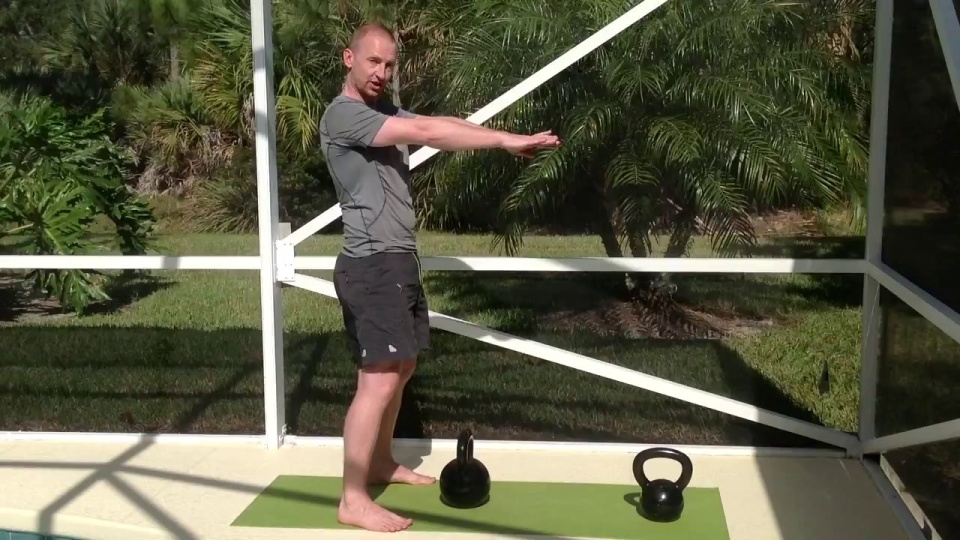
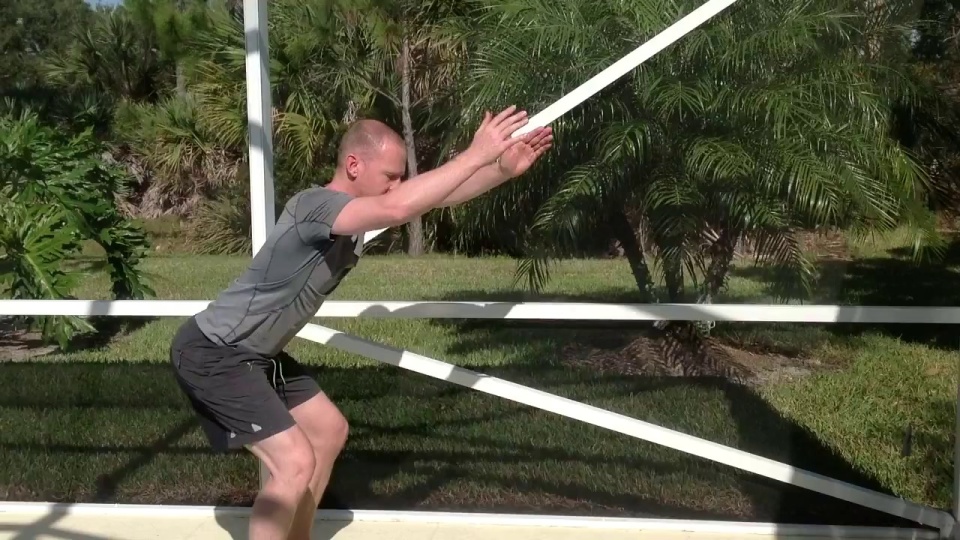

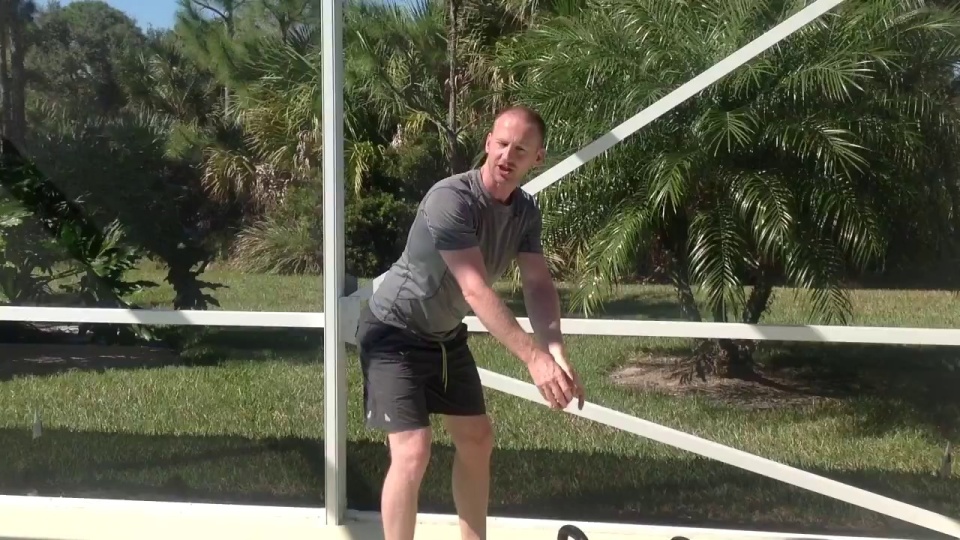
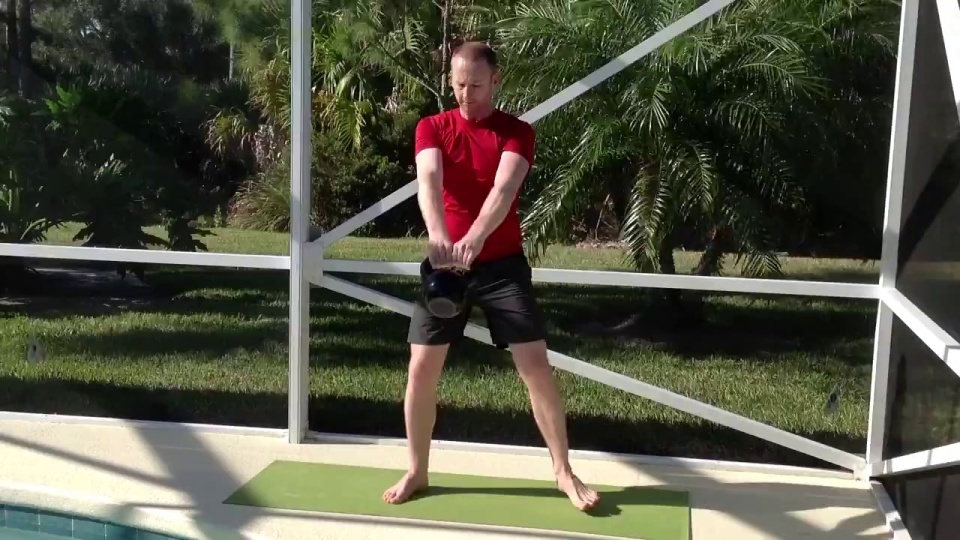
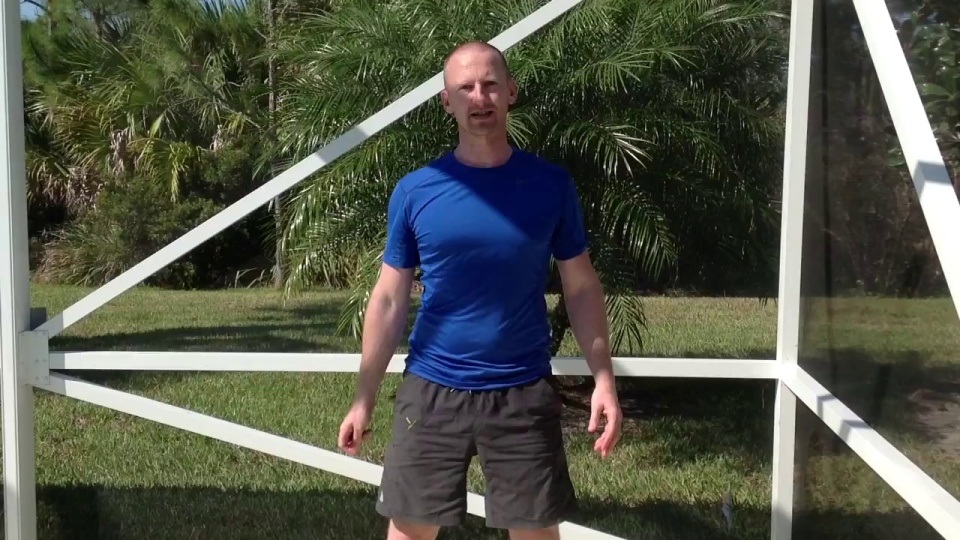
Комментариев нет:
Отправить комментарий